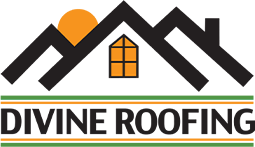For most commercial building managers or owners, making decisions regarding their roof is both confusing and a huge hassle. Most building owners don’t have a clue what makes a good roof, and thus don’t have the ability to know which material is best for them. To make matters even more difficult, commercial roofing materials are quite a bit different from residential roofing in that most commercial buildings have a low-slope or flat roof, which greatly limits the options.
However, there are choices you can wade through, and making the right choice is important to not only reduce disruptions in your building (and possibly your business), but to help you with your energy consumption and several other benefits. On this blog, our Colorado Springs commercial roofers will help you sort through them to determine which is best for you.
Thermoplastic Roofing
Thermoplastic Polyolefin, or TPO as it’s more commonly called, is a modern-age synthetic material that was first introduced in the 1990s. Since that time its popularity has exploded and today TPO roofs are some of the most common commercial flat roofs in the country. TPO is a blend of propylene rubber and ethylene, which makes the material both flexible and durable on top of having fire, ozone, and ultraviolet-resistant qualities. Furthermore, TPO can be purchased in a white color, which helps keeps buildings cooler by reflecting more of the sun’s energy away back into the atmosphere.
Just how durable is TPO? Well, that’s one of the downsides—we don’t really know yet because it hasn’t been around all that long. In fact, it hasn’t even been on the market for 30 years yet so we really don’t even have preliminary real-world durability standards to go by. Furthermore, there’s another big downside: TPO is not puncture-resistant, which means it’s not a good material for roofs that are going to see any foot traffic.
Synthetic Rubber
Before we start, no, synthetic rubber roofs are not the same thing as TPO—they’re a different compound of materials. These roofs have been around since the 1970s, and many properly-installed synthetic rubber roofs can last 30 to 40 years or more. This is a particularly effective material for large buildings that have an extensive roof covering thousands of square feet. They’re also particularly popular for these purposes because they’re extremely quick and easy to install in addition to being fire-resistant. Likewise, they’re a more “green” choice, as they’re recyclable and environmentally-friendly.
Built-Up Roofing
Built-up roofing is a type of asphalt roofing that involves using multiple layers of material to protect your roof and seal it against the elements. Their most distinctive feature is their top layer, which is usually a thick layer of gravel. First the bad news about these types of roofing: they’re generally more expensive, they can be difficult to repair, and installation is a pretty difficult process, so you’ll want to make sure you’re working with a Colorado Springs roofing professional.
However, the good news is when it comes to durability, they’re hard to beat. Built-up roofing is particularly strong and leak-resistant when installed correctly, and requires little maintenance to stay in great condition. They can even withstand heavy amounts of foot traffic, which means that you may be able to utilize the space without having to worry too much.
Discuss your commercial roofing options by calling Divine Roofing, Inc. at (719) 497-1005 today!
